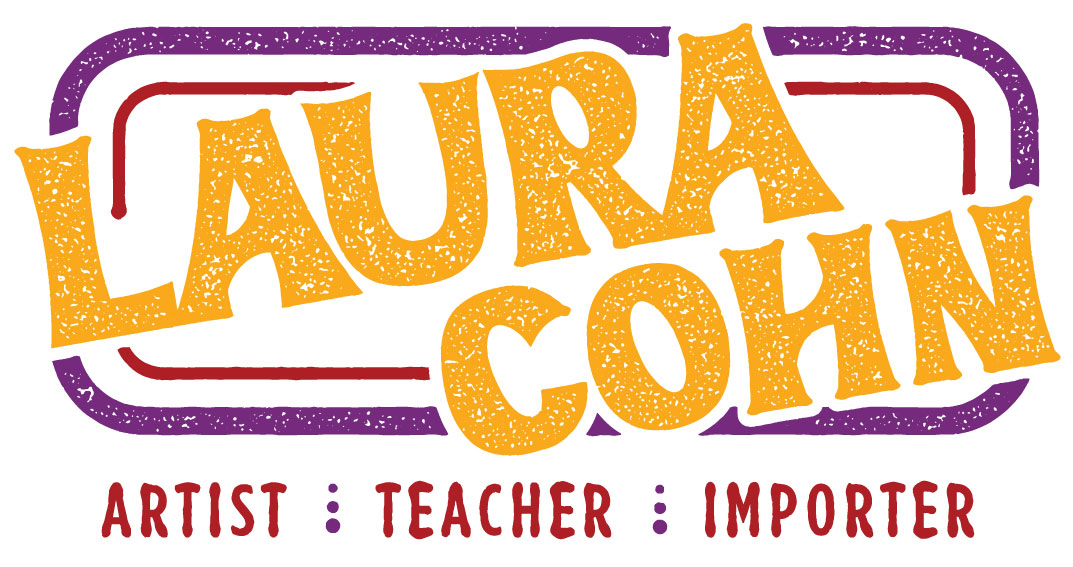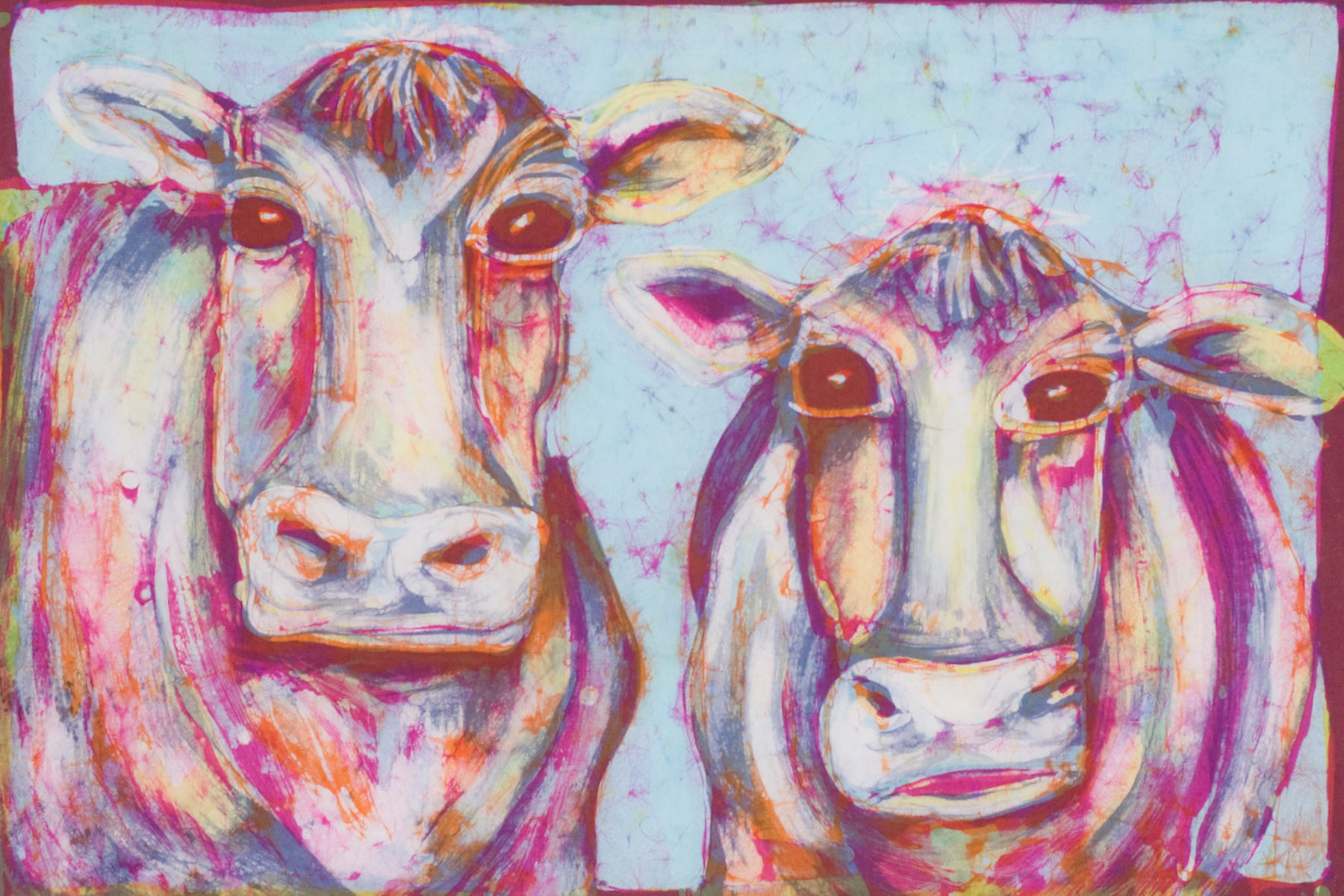A recurring paradox for me is walking between two galleries, each a block apart. I enter the art gallery and present slides of my work to the owner for viewing. She retreats into the back room and emerges five minutes later with a reserved look on her face. “These are lovely paintings, Laura, but didn’t you say they were batik? I think that this medium would show better in a craft gallery. There happens to be a nice one right down the block.” I retrieve my slides, say thank you, and walk down the block to the craft gallery. The owner greets me and, once again, retreats with my slides into the back room. He returns a few moments later. “Aren’t these interesting. Such expression. So much so, they are much more painterly than other batiks I’ve seen. I recommend that you show them to a fine art gallery where paintings like yours would be. There happens to be a nice one right down the block.”
This paradox illustrates my challenge to explain what my work is. Is it painting? If it is batik, isn’t it then fabric? Am I a textile artist? Is it a craft or a fine art? Limited by the definitions of the above words, and the general desire for others to define, differentiate, and delineate between things, I’d rather my work speak for itself. However, understandably, not everyone can see it in person. Therefore, I attempt to put words on top of my color and movement.
Technically, my work should not be called “painting” because there is no paint involved in the process. In fact, I use colored dye pigments and wax resist technique to create works on cotton. However, one of my primary tools is a paintbrush, and my primary motivation for making art is that of a painter. The freedom of expression I feel with a brush in hand cannot be duplicated in other media I’ve experimented with. When fully engaged in my process of painting, I can be found dancing in front of a stationary painting, brush in hand, flowing hot wax onto the fabric like a delicious sweet nectar pouring forth. Originally, as an oil painter, I found the application of the oils to be the most sensual and interesting part of the painting. I hold the same true for making batik. Today, the boundaries in the arts between various disciplines and media have blurred to a point that my convergence of traditional batik techniques, with the tools and spirit of painting, is a natural union. I am warmed by the presence of other artisans and galleries that meet in the middle of the block, creating new art forms in the light of older ones.


